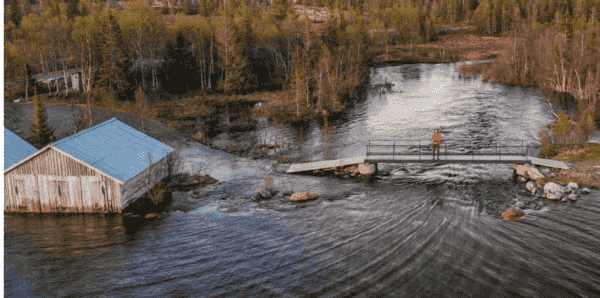Abstract
The 2025 floods in Punjab, Haryana, and Himachal Pradesh revealed the devastating consequences of inadequate dam and reservoir management during extreme rainfall events. Sudden water releases without sufficient warning aggravated flooding, causing massive loss of life and property.
This article examines the legal framework governing dam operations in India, focusing on constitutional mandates, statutory provisions, and judicial precedents. By analysing the intersection of environmental law and disaster management, it highlights gaps in accountability and suggests reforms for integrating safety, transparency, and ecological sustainability into dam governance.
Introduction
Dams and reservoirs are integral to India’s water and energy infrastructure, but they also carry immense risk. When mismanaged during extreme rainfall, they can convert natural disasters into man-made tragedies.
The 2025 floods in Punjab and neighbouring states provided a grim reminder of this reality, as abrupt releases from reservoirs intensified downstream inundation.
The Supreme Court took suo moto cognizance, seeking explanations from dam authorities about failure to adhere to safety protocols. This episode underscores the urgent need to revisit India’s legal accountability framework for dam operations.
Legal Framework Governing Dam Safety
- The Dam Safety Act, 2021 establishes protocols for inspection, maintenance, and emergency planning, creating the National Committee on Dam Safety and State Dam Safety Organisations. However, enforcement has been inconsistent, and several state bodies remain under-resourced.
- The Environment (Protection) Act, 1986 and Water (Prevention and Control of Pollution) Act, 1974 provide broader powers for regulating ecological harm.
- The Disaster Management Act, 2005 obliges authorities to mitigate risks, but in practice, disaster response remains reactive.
Constitutional provisions also underpin accountability:
- Article 21 (right to life)
- Article 48A (state’s duty to protect the environment)
- Article 51A(g) (citizens’ duty to preserve the environment)
Together, they impose a responsibility on dam operators—whether state or central—to ensure operations do not endanger lives.
Judicial Precedents on Dam Accountability
Courts have repeatedly intervened in matters of dam safety and accountability, laying down guiding principles for responsible management.
- Rajasthan State Electricity Board v. Dy. Commissioner & Collector, Kota (1986): The Rajasthan High Court held dam authorities liable for flood damages caused by sudden water release, stressing the need for timely warnings and gradual discharge.
- Hirakud Dam Case, Orissa HC (1999): The Court examined negligence claims against dam managers after recurring floods, holding that foreseeability and preventive action are key to avoiding liability.
- Periyar Dam Case, Kerala HC (2000): The Court underscored that dam safety is not just a technical issue but a constitutional obligation under Article 21, requiring enforceable disaster preparedness plans.
- Mullaperiyar Dam Dispute – State of Tamil Nadu v. State of Kerala (2006, 2014 SC): The Supreme Court recognised that dam safety directly implicates the right to life and directed continuous monitoring mechanisms.
- Alaknanda Hydro Power Co. Ltd. v. Anuj Joshi (2014 SC): The Court linked unregulated hydropower and dam activity to the Uttarakhand floods of 2013, ordering a freeze on new projects until environmental clearances were properly assessed.
- Re: Floods in Hyderabad (AP HC, 2000s): The High Court found that failure to follow dam operation manuals and standard operating procedures could amount to actionable negligence.
- Kishan Chand v. State of Haryana (2010 SC): While not dam-specific, the Court reiterated state liability for foreseeable risks, reinforcing the principle of strict liability when negligence aggravates disasters.
These precedents collectively establish that dam mismanagement is not merely an administrative lapse but a violation of constitutional rights, exposing authorities to judicial scrutiny and liability.
The 2025 Floods and Emerging Accountability Questions
In the 2025 floods, the sudden release of water from Bhakra Nangal and Pong dams was reported to have worsened downstream flooding.
Questions arose about whether the dam authorities adequately followed reservoir operation manuals, forecast models, and warning systems. The Supreme Court’s suo moto observations suggest a judicial willingness to extend principles of negligence and strict liability to dam operations.
This reflects an evolution in environmental jurisprudence, where courts move beyond reactive compensation toward mandating structural reforms in governance.
Policy Gaps and Challenges
Despite the Dam Safety Act, 2021, several challenges persist:
- Weak coordination between central and state authorities.
- Outdated operation manuals not designed for extreme rainfall intensified by climate change.
- Lack of real-time data sharing with local administrations.
- Absence of independent oversight and citizen participation.
Moreover, compensation mechanisms for flood victims remain slow and inadequate, failing to provide effective remedies.
Comparative Perspectives
Internationally:
- Japan and the United States enforce strict liability regimes for dam operators, coupled with mandatory insurance and independent audits.
- The European Union’s Floods Directive requires member states to integrate flood risk management with ecological preservation.
India’s fragmented approach to dam safety lags behind these models.
Recommendations
To address accountability gaps, reforms should include:
- Binding legal obligations for early warnings and phased reservoir releases.
- Independent dam safety tribunals to hear flood-related claims swiftly.
- Integration of climate risk into reservoir operation manuals.
- Public disclosure of dam safety audits and real-time data.
- Strengthening coordination between disaster authorities, state governments, and dam operators.
Conclusion
The 2025 floods in Punjab and neighbouring states underline the urgent need for legal and institutional reform in dam governance.
Judicial precedents already recognise dam safety as a constitutional duty under Article 21. The challenge now lies in operationalising these principles into enforceable accountability mechanisms.
Protecting lives downstream requires not only technical competence but also a strong legal framework rooted in transparency, foresight, and responsibility.
Also Read:
Rights of undertrial prisoners in India
How To Send A Legal Notice In India


